Annual Summer Interns Make Improvements to Fallingwater’s Visitor Experience

By Doug Oster
August 24, 2021
The sound of rushing water from Bear Run is ever-present when visiting the grounds at Fallingwater. Sometimes it’s intense when close to the house, but it's a whisper when exploring the outskirts of the woodland property.
Interns Brian Melchionni and Hiromitsu Suetake are standing on a huge piece of Pottsville sandstone in the shuttered quarry which provided the stone for the historic house back in the late 1930s.
They are part of the Katherine Mabis McKenna Foundation Landscape Internship program as you can check here, which is just one of the internships offered at Fallingwater. Since 1986 two interns have been selected to be part of the Fallingwater team, always with an important project in mind.
In this case, the pair have spent the summer carefully uncovering the quarry and preparing it for the prospect of visitors one day.
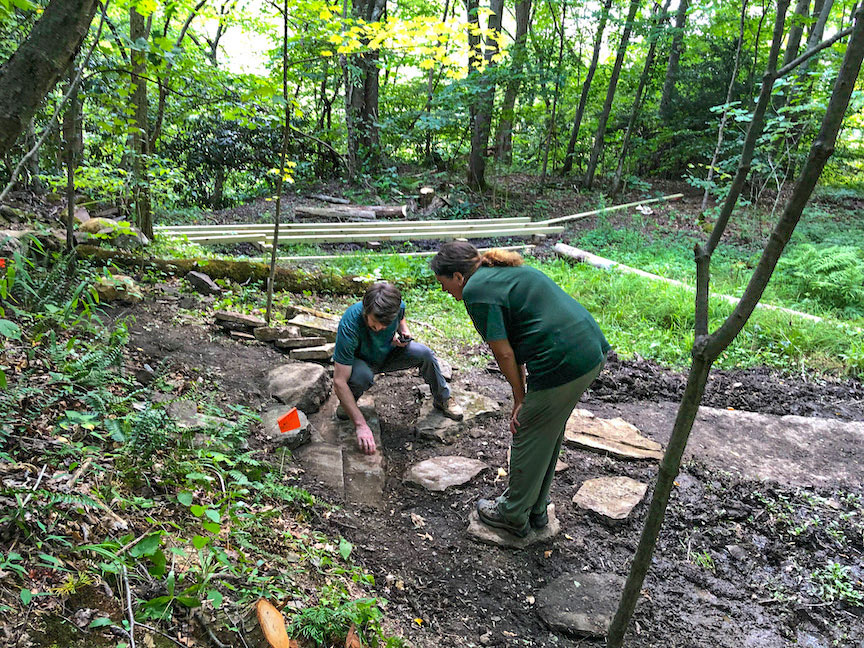
Director of operations Mike Kuzemchak sees the relationship with the interns as symbiotic.
“We’re always looking for creative ideas to enhance our visitor’s experience,” he says. “The internship program is a great way for projects to get done here, but also to help up-and-coming professionals in the landscape architecture field, primarily, to get some experience in a really wonderful part of the world.”
The interns live on-site for three months working on their project.
“They are immersed in Fallingwater, the grounds the region and the Laurel Highlands,” Kuzemchak adds. “This is such a unique place; we think that people can come out of spending some time here with a different way of looking at the world.”
One of the many intern projects Kuzemchak is proud of is a kiosk created at the trailhead of the 5000-acre Bear Run Nature Reserve that the house sits on. For years it was a sort of standard state park-like sign, which needed a fresh approach.
“They designed a really cool kiosk that echoes components of the house, of Frank Lloyd Wright’s design, without mimicking it too much,” he says proudly.
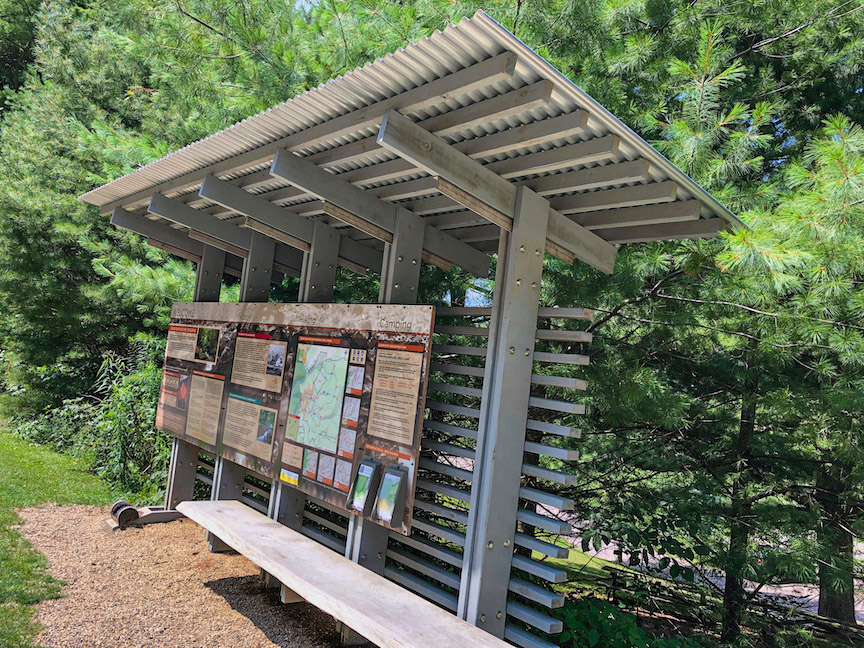
Several years ago, intern Eric Kobal renovated a sort of secret garden in the house on the Pottery Terrace. It can often be understandably overlooked on the standard tour as it would be tight quarters for a group visit but should be sought out.
He also worked on the Guest House steps on the trail leading up to Shady Lane.
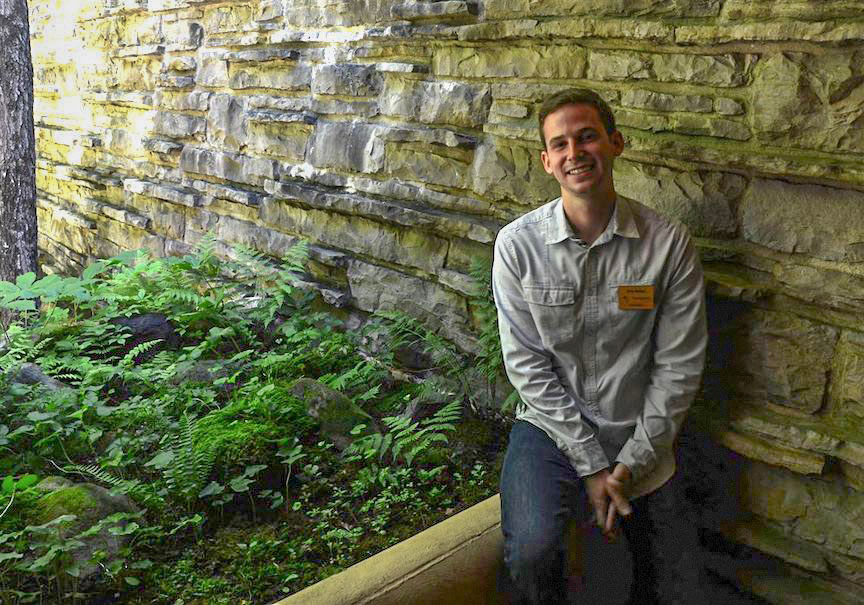
An amphitheater also near the Bear Run trailhead was another one of the many projects completed over the years by two other interns.
It’s fun to see the interns when they first arrive and see Fallingwater for the first time says Kuzemchak. “You can look at the house online or in a book, he says, but to see it in the landscape really can’t be replicated. To be in the landscape, to walk along the wall of rhododendron and approach the house is such a unique thing. I think a lot of the interns are blown away by that.”
That’s certainly how Suetake felt.
“It was mind-blowing," he says. "The scale, the fact that it’s on a river — it’s just unique architecture you just don’t see anywhere else.”
Kuzemchak also sees other value in the interns at Fallingwater. “The beauty of having them here," he adds, "is they are bringing another perspective.”
Behind the house, back up at the quarry, horticulturist and volunteer coordinator Ann Talarek is with Melchionni, who is showing her some cut stone he has uncovered.
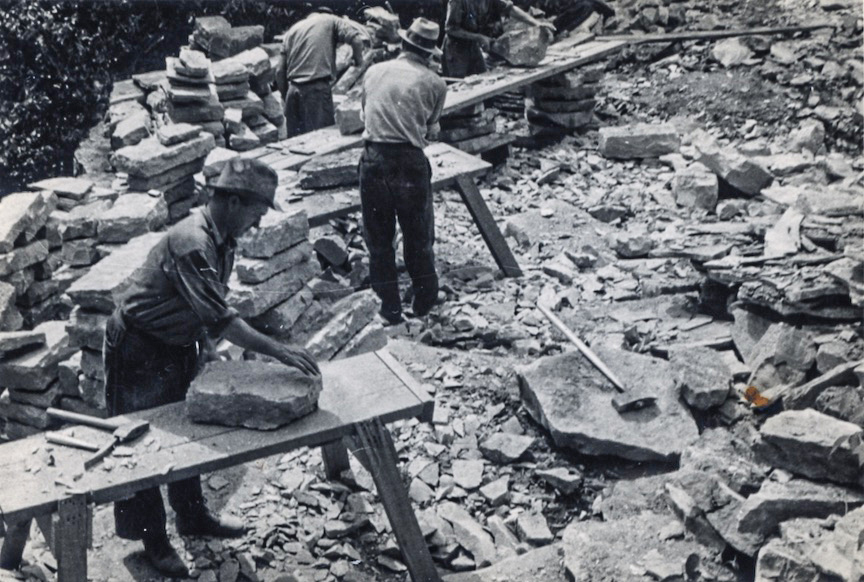
When he and Suetake first came to the site, it was covered in growth, including copious amounts of invasive multiflora roses.
“This is sandstone floor where they finished,” Talarek says of the huge exposed stone left in the ground. “What we are trying to achieve is for people to see how this mimics the house, especially in the great room," she says. "This is the site where all the stone came for the house and the guest house came from. We’re trying to make this part of the landscape hike.”
That will be down the road. This is phase one, and much of the stone has been revealed, and both interns have studied the historic photos of the quarry when it was in its prime.
“I feel like stone is literally or figuratively the backbone of the house itself," Melchionni says while standing on the exposed rock, commenting on the rich history of this place. “It’s built on the water for its relation to stone — it’s half made of the material itself,” he adds.
Talarek is part of the team that decides the focus of the annual project, interviews prospective interns and has been their daily supervisor since 2007.
“It’s important to fit the right intern with each project,” she says. Her interviews with Suetake actually happened for him in the middle of the night, due to the time difference in his native Japan.
The site is a type of wetland and the interns have worked with her to create a planting plan filled with wetland species. One will be swamp milkweed.
There’s also something called a puncheon, a low bridge to get across the swampy soil.
“I hope it’s an extension of the grounds experience,” Talarek remarks. “I think it ties the natural setting to the house, it makes sense. Eventually, I could see this becoming a much larger trail system.”
There are 25 miles of trails through the nature reserve and one behind the house leads to the Paradise Overlook, which offers hikers an amazing view of the Youghiogheny River Gorge.
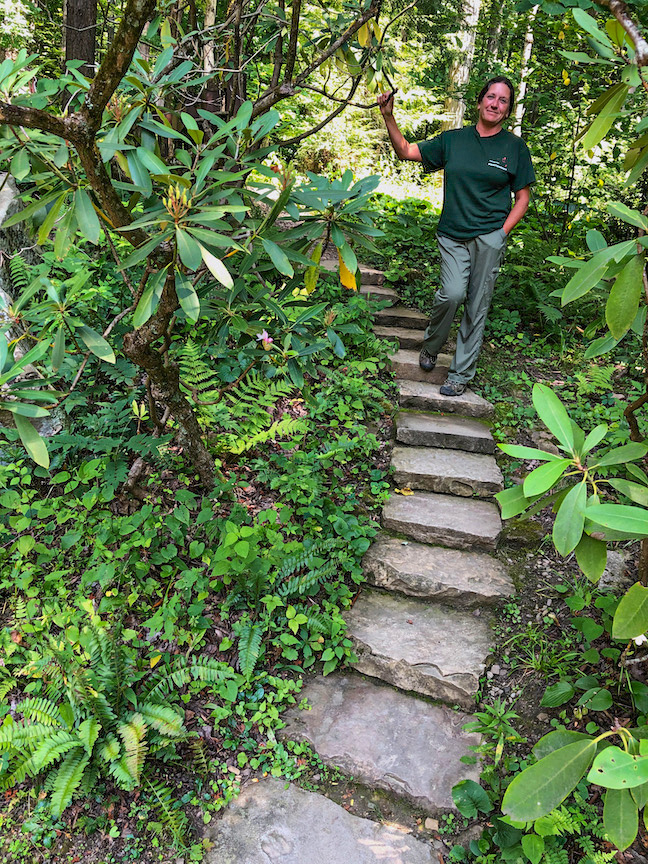
Suetake explains why the work they are doing here is so important. “It is the relationship to the Fallingwater house itself and its history, he says of the quarry area.
“Physically exposing it, but also knowledge-wise exposing the site. So people can experience it again, it would be cool.”
There have been relics found from the late ’30s at the site and he’s studied the old cuts on stone. Standing in the shade on the huge piece of sandstone, he brings up an interesting dichotomy; that Frank Lloyd Wright’s masterpiece, looks as though the Kaufmann family left Fallingwater yesterday.
“But here, it’s been 80 years since the people have left as it was, he says. “There’s much history to uncover still, as we work on the site.”
Melchionni feels the same sort of historic link when doing what he calls cultural landscape work. Respecting the ecology that has changed, stripping away invasives and preserving what was here all those decades ago.
“Any time I look at the site," he says quietly, "I’m instantly transported back to another time and trying to imagine what it would have been like to actually work in here.”


